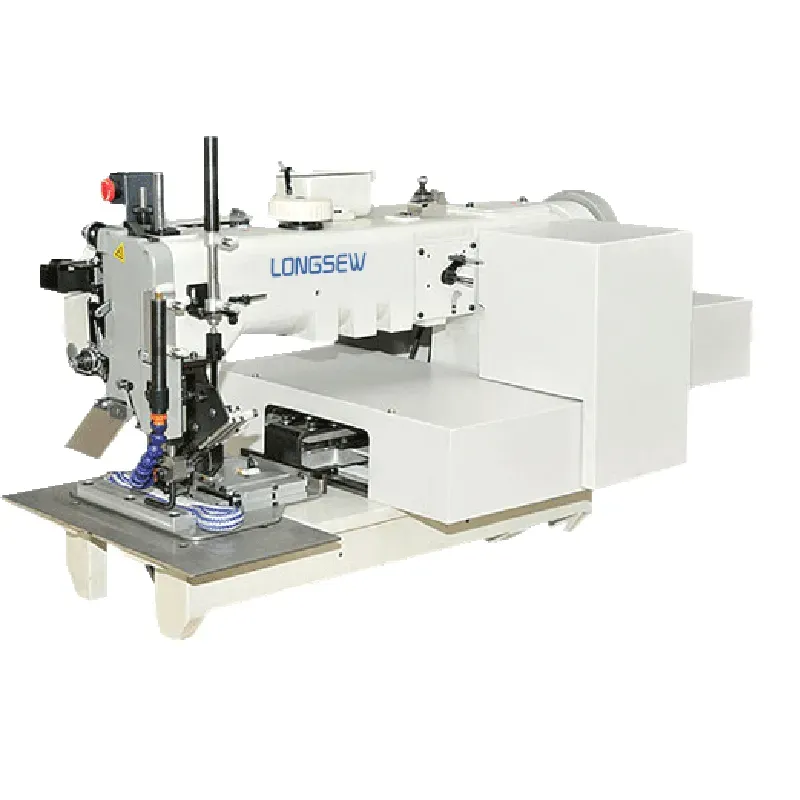automatic shoe sewing machine
The Rise of Automatic Shoe Sewing Machines
In the ever-evolving landscape of the footwear industry, efficiency and precision have become crucial in meeting the demands of modern consumers. Among the innovations that have significantly transformed shoe manufacturing, the automatic shoe sewing machine stands out as a pivotal breakthrough. This technology not only enhances productivity but also ensures consistency and quality in the production of shoes.
Automatic shoe sewing machines are designed to automate the process of stitching various components of footwear. Unlike traditional sewing machines, which require manual operation and skilled labor, automatic machines can perform intricate sewing tasks with minimal human intervention. This automation reduces the time taken to produce each pair of shoes, making it feasible for manufacturers to keep pace with increasing market demands.
One of the primary advantages of using automatic shoe sewing machines is their speed. These machines can sew multiple layers of materials simultaneously, significantly cutting down on production time. For instance, a skilled operator may take several minutes to complete a single seam manually, while an automatic machine can accomplish the same task in a fraction of the time. This efficiency allows manufacturers to shorten lead times and respond more swiftly to fashion trends.
Additionally, automatic sewing machines are equipped with advanced technology that ensures precise stitching. The integration of computer numerical control (CNC) systems allows these machines to follow exact patterns with impeccable accuracy. This precision is crucial in footwear production, where even the slightest deviation can affect the fit and comfort of the shoe. With automatic machines, manufacturers can achieve a level of consistency that is difficult to replicate with manual sewing processes.
automatic shoe sewing machine

Moreover, these machines are designed to handle a wide variety of materials commonly used in shoe production, including leather, synthetic fabrics, and textiles. This versatility allows manufacturers to experiment with different designs and styles without needing to invest in specialized equipment for each material. As a result, companies can diversify their product offerings, appealing to a broader range of consumers.
While the benefits of automatic shoe sewing machines are clear, their implementation also presents certain challenges. The initial investment in such advanced technology can be substantial, and some manufacturers may hesitate to transition from traditional methods. Additionally, the integration of automation requires a shift in workforce skills. Workers must be trained to operate and maintain complex machinery, which may involve a learning curve.
Nevertheless, the long-term advantages of adopting automatic sewing machines far outweigh these challenges. As labor costs rise and consumer expectations for quality and speed increase, the footwear industry must adapt to stay competitive. Investing in automatic shoe sewing machines not only boosts productivity but also enhances product quality, ultimately leading to greater customer satisfaction.
In conclusion, automatic shoe sewing machines represent a significant advancement in footwear manufacturing. Their ability to streamline production, ensure precision, and accommodate diverse materials makes them a vital asset for modern shoe manufacturers. As the industry continues to evolve, the use of such technology will likely become the standard, paving the way for a new era of innovation and efficiency in shoe production. Embracing these changes will allow manufacturers to thrive in a fast-paced market and meet the ever-growing demands of consumers around the world.
-
Industrial Cylinder Arm Sewing Machine: Revolutionizing Heavy-Duty SewingNewsJul.28,2025
-
Cylinder Arm Sewing Machine: Perfect for Special Sewing ApplicationsNewsJul.28,2025
-
Cylinder Bed Sewing Machine: Essential for Sewing Complex MaterialsNewsJul.28,2025
-
Heavy Duty Sewing Machine: The Essential Tool for Industrial ApplicationsNewsJul.28,2025
-
Computerized Pattern Sewing Machine: Revolutionizing Precision StitchingNewsJul.28,2025
-
Heavy Duty Industrial Sewing Machine: Power Meets PrecisionNewsJul.28,2025
-
Leather Sewing Machine: The Industrial Standard for Tough MaterialsNewsJul.18,2025





























